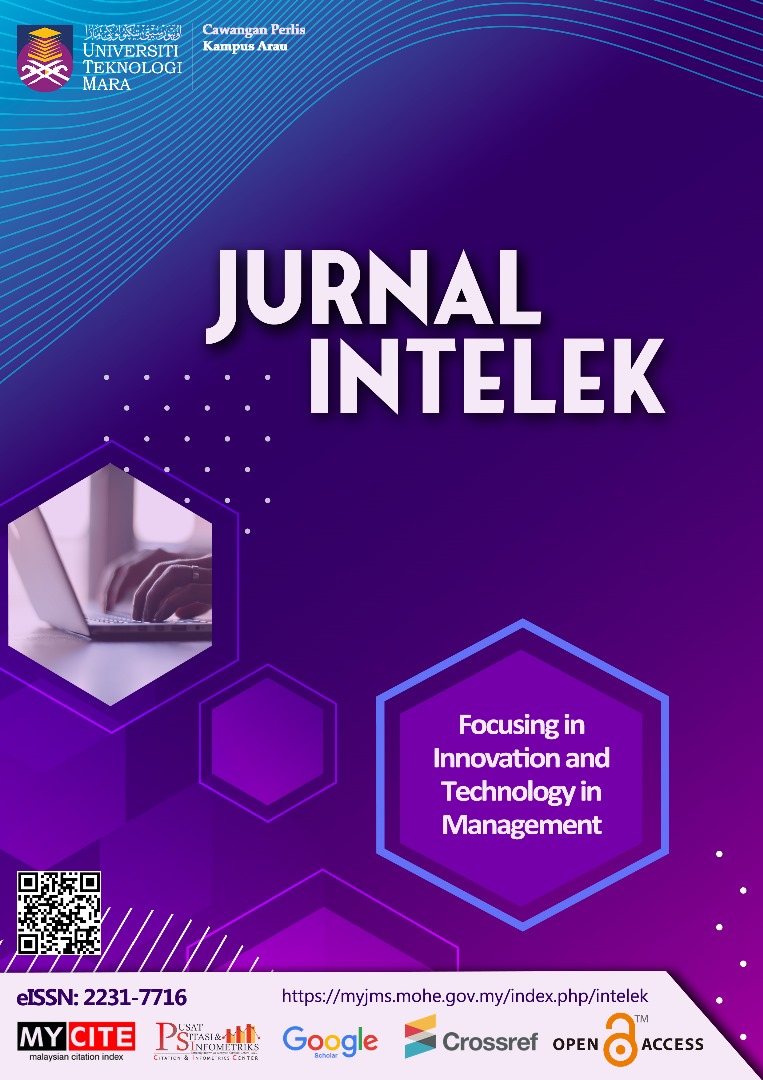Exploring Augmented Reality Applications in Malaysian Construction Industry
DOI:
https://doi.org/10.24191/ji.v20i1.3813Keywords:
augmented reality, virtual reality, Malaysian construction industryAbstract
Despite technological advancements like Virtual Reality (VR) and Augmented Reality (AR), the construction industry has yet to capitalise on these advantages fully. AR has the potential to address construction challenges like skill shortages and time overruns. However, the adoption rate and awareness level among the workers in this sector are still low. Therefore, there is a need to explore the opportunity of AR applications in this industry. Thus, this research aims to promote strategies to encourage AR application in the Malaysian construction sector. This research objectives are to investigate the implementation benefits that can promote AR usage and to investigate the challenges that hinder AR implementation. This research targets professionals with AR experience working in the construction industry. The qualitative data collection method was used for this research through semi-structured interviews with three respondents, focusing on their experiences with AR. Thematic analysis was used to analyse the data using Atlas.ti software. The findings reveal that AR streamlines processes, improve visualisation, and enhances communication. However, challenges include technical limitations, high costs, a lack of skilled personnel, and resistance to change. AR is recognised for its potential to transform the construction industry, but its adoption is hindered by several barriers that need to be addressed for wider implementation. Due to that, the study proposes strategies, such as enhancing technical infrastructure and comprehensive training programs.
References
Aggarwal, R., & Singhal, A. (2019). Augmented Reality and its effect on our life. Proceedings of the 9th International Conference on Cloud Computing, Data Science and Engineering, Confluence 2019, 510–515. https://doi.org/10.1109/CONFLUENCE.2019.8776989
Ahmed, S. (2019). A Review on Using Opportunities of Augmented Reality and Virtual Reality in Construction Project Management. Organization, Technology and Management in Construction, 11(1), 1839–1852. De Gruyter Open Ltd. https://doi.org/10.2478/otmcj-2018-0012
Alaloul, W. S., Musarat, M. A., Rabbani, M. B. A., Iqbal, Q., Maqsoom, A., & Farooq, W. (2021). Construction sector contribution to economic stability: Malaysian GDP distribution. Sustainability (Switzerland), 13(9). https://doi.org/10.3390/su13095012
Arena, F., Collotta, M., Pau, G., & Termine, F. (2022). An overview of augmented reality. Computers, 11(2). MDPI. https://doi.org/10.3390/computers11020028
Bekele, W. B., & Ago, F. Y. (2022). Sample size for interview in Qualitative Research in Social Sciences: A Guide to Novice Researchers. Research in Educational Policy and Management, 4(1), 42–50. https://doi.org/10.46303/repam.2022.3
Braun, V., & Clarke, V. (2019). Reflecting on reflexive thematic analysis. Qualitative Research in Sport Exercise and Health, 11(4), 589–597. https://doi.org/10.1080/2159676x.2019.1628806
Chalhoub, J., & Ayer, S. K. (2019). Exploring the performance of an augmented reality application for construction layout tasks. Multimedia Tools and Applications, 78(24), 35075–35098. https://doi.org/10.1007/s11042-019-08063-5
Davila Delgado, J. M., Oyedele, L., Beach, T., & Demian, P. (2020). Augmented and virtual reality in construction: drivers and limitations for industry adoption. Journal of Construction Engineering and Management, 146(7). https://doi.org/10.1061/(asce)co.1943-7862.0001844
Delgado, J. M. D., Oyedele, L., Demian, P., & Beach, T. (2020). A research agenda for augmented and virtual reality in architecture, engineering, and construction. Advanced Engineering Informatics, 45. https://doi.org/10.1016/j.aei.2020.101122
El Kassis, R., Ayer, S. K., & El Asmar, M. (2023). Augmented reality applications for synchronized communication in construction: A review of challenges and opportunities. Applied Sciences (Switzerland), 13(13). https://doi.org/10.3390/app13137614
Hajirasouli, A., Banihashemi, S., Drogemuller, R., Fazeli, A., & Mohandes, S. R. (2022). Augmented reality in design and construction: thematic analysis and conceptual frameworks. Construction Innovation, 22(3), 412–443. Emerald Group Holdings Ltd. https://doi.org/10.1108/CI-01-2022-0007
Ibrahim, F. S., Esa, M., & Rahman, R. A. (2021). The adoption of IOT in the Malaysian construction industry: Towards construction 4.0. International Journal of Sustainable Construction Engineering and Technology, 12(1), 56–67. https://doi.org/10.30880/ijscet.2021.12.01.006
Malta, A., Farinha, T., & Mendes, M. (2023). Augmented reality in maintenance—History and perspectives. Journal of Imaging, 9(7). https://doi.org/10.3390/jimaging9070142
Maskuriy, R., Selamat, A., Maresova, P., Krejcar, O., & David, O. O. (2019). Industry 4.0 for the construction industry: Review of management perspective. Economies, 7(3). MDPI Multidisciplinary Digital Publishing Institute. https://doi.org/10.3390/economies7030068
Nassereddine, H., Hanna, A. S., Veeramani, D., & Lotfallah, W. (2022). Augmented reality in the construction industry: Use-cases, benefits, obstacles, and future trends. Frontiers in Built Environment, 8. https://doi.org/10.3389/fbuil.2022.730094
Noghabaei, M., Heydarian, A., Balali, V., & Han, K. (2020). Trend analysis on adoption of virtual and augmented reality in the architecture, engineering, and construction industry. Data, 5(1). https://doi.org/10.3390/data5010026
Oke, A. E., & Arowoiya, V. A. (2021). An analysis of the application areas of augmented reality technology in the construction industry. Smart and Sustainable Built Environment, 11(4), 1081–1098. https://doi.org/10.1108/sasbe-11-2020-0162
Pan, N., & Isnaeni, N. N. (2024). Integration of augmented reality and building information modeling for enhanced construction inspection—A Case Study. Buildings, 14(3), 612. https://doi.org/10.3390/buildings14030612
Ratajczak, J., Riedl, M., & Matt, D. T. (2019). BIM-based and AR application combined with location-based management system for the improvement of the construction performance. Buildings, 9(5). https://doi.org/10.3390/buildings9050118
Sacks, R., Brilakis, I., Pikas, E., Xie, H. S., & Girolami, M. (2020). Construction with digital twin information systems. Data-Centric
Salinas, D., Muñoz-La Rivera, F., & Mora-Serrano, J. (2022). Critical analysis of the evaluation methods of extended reality (xr) experiences for construction safety. International Journal of Environmental Research and Public Health, 19(22). MDPI. https://doi.org/10.3390/ijerph192215272
Vaismoradi, M., & Snelgrove, S. (2019). Theme in qualitative content analysis and thematic analysis. Forum Qualitative Sozialforschung, 20(3). https://doi.org/10.17169/fqs-20.3.3376
Wang, Q., & Kim, M. (2019). Applications of 3D point cloud data in the construction industry: A fifteen-year review from 2004 to 2018. Advanced Engineering Informatics, 39, 306–319.
Xu, C., & Zhang, L. (2022). Application of XR-based virtuality-reality coexisting course. Intelligent Automation and Soft Computing, 31(3), 1843–1855. https://doi.org/10.32604/IASC.2022.020365
Yap, J. B. H., Chow, I. N., & Shavarebi, K. (2019). Criticality of Construction Industry Problems in Developing Countries: Analyzing Malaysian Projects. Journal of Management in Engineering, 35(5). https://doi.org/10.1061/(asce)me.1943-5479.0000709
Zidane, Y. J., & Andersen, B. (2018). The top 10 universal delay factors in construction projects. International Journal of Managing Projects in Business, 11(3), 650–672. https://doi.org/10.1108/ijmpb-05-2017-0052
Downloads
Published
Issue
Section
License
Copyright (c) 2025 Jurnal Intelek

This work is licensed under a Creative Commons Attribution-ShareAlike 4.0 International License.











